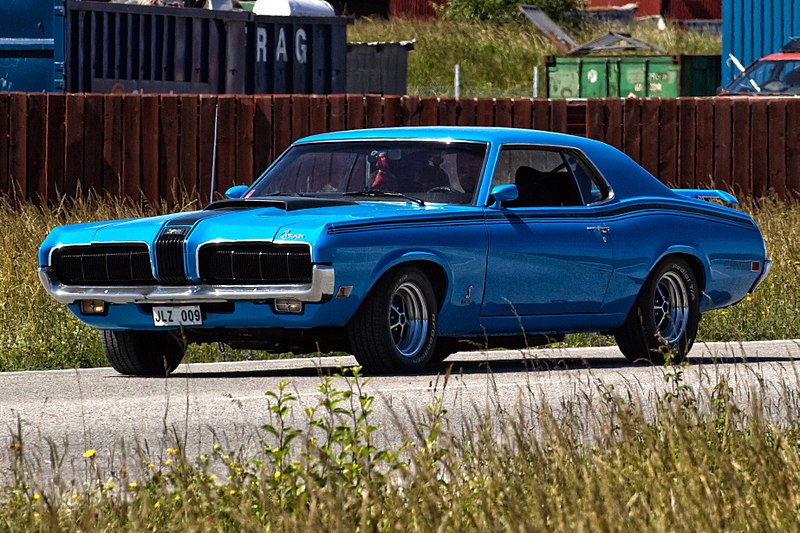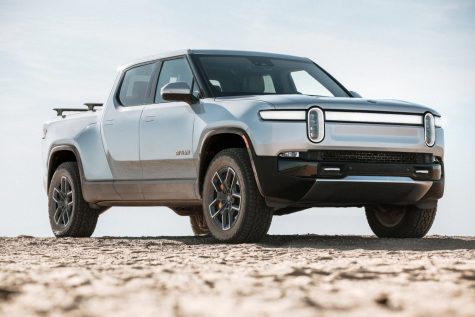The muscle car era of the late ‘60s and early ‘70s was characterized by high displacement V8 engines, fastback roofline slopes and roaring quarter-mile drag races. While the era ended with the energy crisis in the ‘70s and increased environmental restrictions, the glory of the era will not soon be forgotten. These muscle cars may not have achieved the legendary status of the Dodge Challenger or Ford Mustang, but they gained a very specific and loyal following that spans generations. These lesser known cars packed a punch on the streets and the drag strip.
AMC AMX (1968-1970)
From the humble American Motors Corporation (AMC) came the two-seat underdog, the AMX. In the midst of the mid-’60s muscle car boom, the struggling company needed a performance machine. Debuting in 1968, the AMX was a shortened version of AMC’s Javelin, offered with their top of the line 390 cubic inch V8, producing 340 horsepower. Without many accessory options offered, the AMX was an affordable, lightweight car that was eager to fly down the road.
Chevy Nova (1968-1974)
Originally a compact car that Chevy designed to compete with the Ford Falcon, the Nova was transformed into a muscle car with a longer wheelbase and tougher look for the 1968 model year. Unfortunately, unlike other General Motors X-Platform cars, the Nova was not offered in a station wagon format – a tragedy, considering how unquestionably awesome muscle-wagons are. The Super Sport (SS) version of the Nova was available with Chevy’s big-block 396 cubic inch V8. Because of its superior power-to-weight ratio, its acceleration was on par, if not better than most big muscle cars of the era.
Buick Grand National (1984-1987)
After the energy crisis in the 1970s, nearly all gas-guzzling high displacement muscle cars fell on the chopping block. Then, in the mid-‘80s, the Buick Grand National appeared. A new age muscle car, the Buick Grand National proved that there is a replacement for displacement – and it came in the form of a turbo-charged, intercooled 3.8 liter V6. For the final year, Buick partnered with McLaren Performance Technologies to produce the Grand National Experimental (GNX) that beat the Ferrari F40 and Porsche 930 on the dragstrip.
Datsun 240Z (1969-1973)
While not technically a muscle car, this Japanese-made jalopy still deserves a place on the list because of its cult-like following. The two-door hatchback coupe was produced to be a competitor with the European sports cars of the era and its sleek styling and modern engineering did just that. Fitted with a 2.4 liter Inline-6 engine, the 240Z’s relatively low price and impressive performance captivated the public and it transformed the Japanese automotive industry beyond the econo-box image.
Ford Torino (1968-1976)
Even with the massive success of the Mustang, Ford wanted more of the muscle car market. Larger and meaner than the Mustang, the Torino GT fastback vaguely resembled the Dodge Charger – its main competition. The Torino GT was offered with the massive 429 cubic inch Cobra Jet V8 which produced 335 horsepower. The Torino suffered from poor advertising from Ford and did not receive the same acclaim as the Mustang, but nevertheless, it found its place in muscle car history.
Mercury Cougar (1966-1973)
Built on the same platform as the iconic Ford pony car, the Cougar had a slightly longer wheelbase than the Mustang and more sophisticated styling. While the Mustang was geared towards young audiences, the Cougar was marketed for the older population who valued maturity and class in their vehicles. Available with the same 428 cubic inch Cobra-Jet V8 as the Torino and Mustang, the Cougar burned tires on the drag strip and even recorded wins against the Chevy Camaro, Plymouth Barracudas, and even its brother, the Mustang.
Chevy El Camino (1959-1987)
Is it a car? Is it a truck? This iconic crossover was a vehicle like no other. Originally designed to compete with Ford’s utility vehicle the Ranchero, the El Camino was transformed into a performance machine during the muscle craze of the ‘60s. In its golden years (1968-1972), the El Camino was built on the Chevelle platform – an iconic muscle car itself. The SS option featured Chevy’s most powerful engine – the 454 cubic inch LS6 V8, which produced a whopping 450 horsepower. The vehicle is featured in pop culture in the “Breaking Bad” sequel movie “El Camino.”
These performance machines represented the pinnacle of American automotive design during the peak of the era. Though they did not achieve the same initial success as their brethren, the enduring nostalgia associated with the era ensured their statuses as classic cars.
















